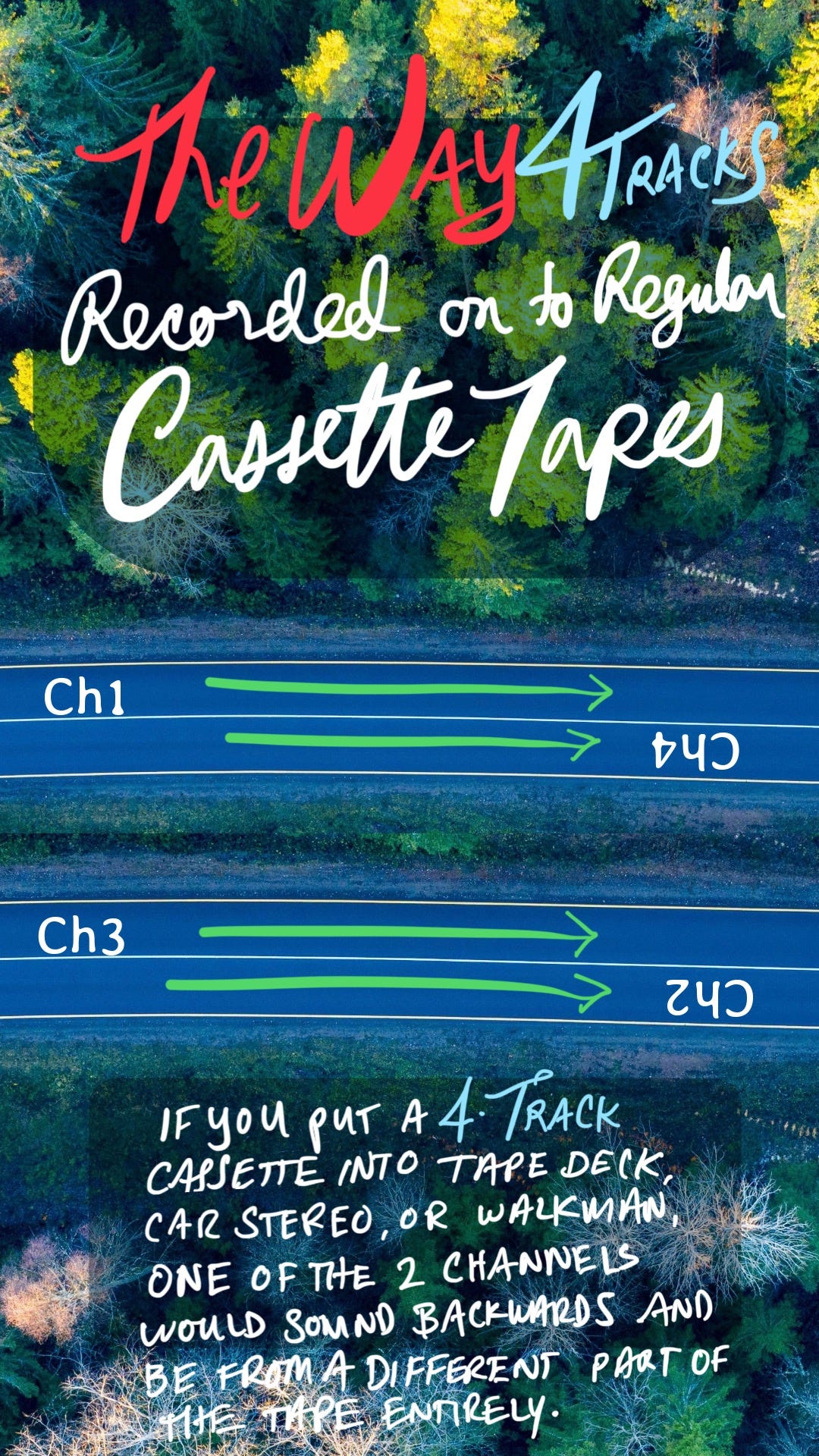Recording Ennui: Technical Notes on a Tiny Medium - 4-Track (Part 4)
Part 4 geeks out on the 4-Track cassette medium, examining the cassette itself, how 4-Tracks work, and my 2022 restoration. Note: I'm still adding to this, but you can read what I have so far.
This is Part 4.
You will find Part 1, “My Journey from Skater to 4-Track Wizard”, here.
You will find Part 2, “The Day I Stopped 4-Tracking”, here.
You will find Part 3, “3 Methods of 4-Tracking”, here.
Part 4 Introduction
In this post, I share what I know about the cassette tape medium and how 4-Track machines record onto normal cassettes differently.
Technical Notes on the Tiny Analog Medium
Learning about this sucks, but I sorta did it for you. Read on if you like to read about how old things used to work.
The Cassette tapes used in a 4-Track and Normal tape player are the same.
A 4-track machine writes sound in a different way to the fettuccine sized magnetic tape than a normal tape deck. That’s the ultimate difference. To get a mix from a 4-Track to a normal cassette, you have to play it out of the 4-track and record it onto a new tape with a normal tape deck.
A normal cassette tape deck
There a 4 channels of audio on any cassette tape. You probably think of cassettes having 2 x sides, A and B. In reality, each side is playing back 2 parallell channels of audio–that are not adjacent to one another. Side A is not channel 1 + channel 2. It’s channel 1 + channel 3. Evens and Odds. It’s the flipping of the tape perpendicularly to the tape head that reverses the direction and aligns alternate 2 +4 channels for side B with the playhead. Tape decks that had an ‘auto-reverse’ feature had a mechanism that shifted the tape head over and played the tape in another direction.
A 4-Track cassette recorder
A typical 4 track recorder writes at once to all 4 channels of a cassette tape, in one direction, simultaneously. The 4-Track tape head & record heads are aligned differently. You can only put a tape into a 4-Track machine correctly the first time. If you were to flip the tape and record, you’d record over all your existing material, in reverse direction.
So, you cannot listen to 4-track tapes in a normal tape deck. If you tried, you’d be hearing 2 channels, and one would be backwards (and from a different out of sync location on the tape roll).
It’s confusing. It’s the result of the design and functionality of the cassette medium and it’s players.
The Restorative Digitizing - 2022
In January of 2022, shortly before my move to Korea, I purchased 2 x Yamaha MT4x recorders (upgraded versions of my original MT-120s) on Reverb.com and captured these 23 x cassette tapes onto my computer–while dismantling my rehearsal space in LIC in preparation for my big move. I didn’t listen while I captured. I had 2 machines capturing at once (8 channels) into my Universal Audio Apollo 8p at 96k 24bit.
I’ve decided, for now, not to spend much time digging through it. I may do more with it once my nostalgia grows strong enough. For now, I’ve protected my original work.

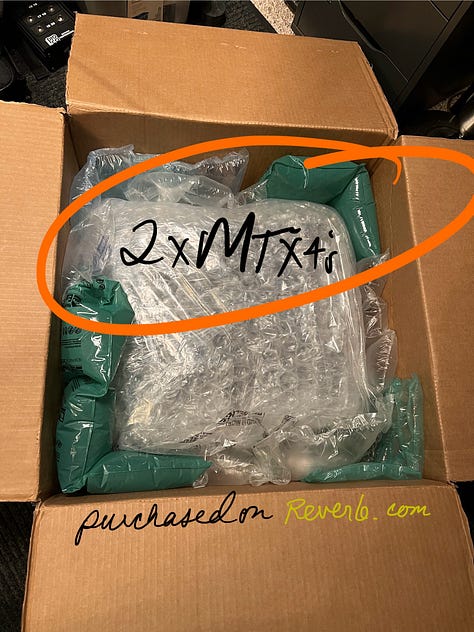
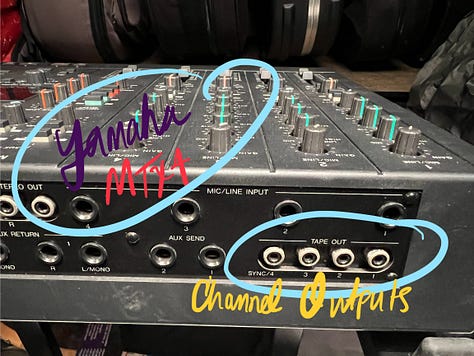
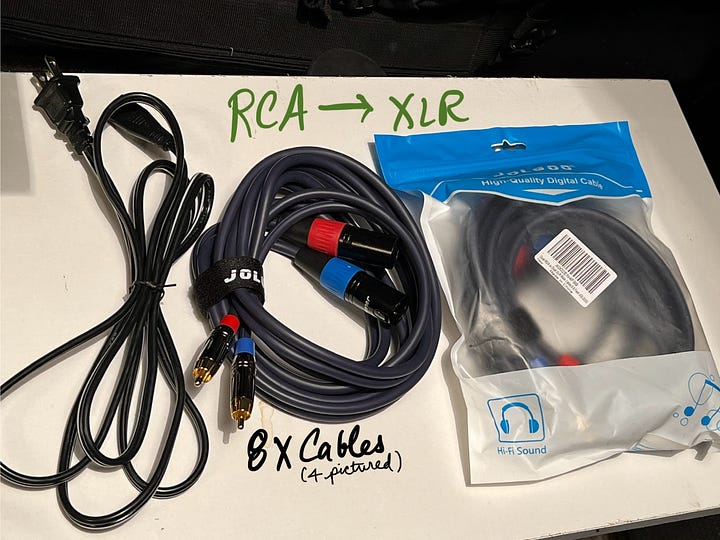
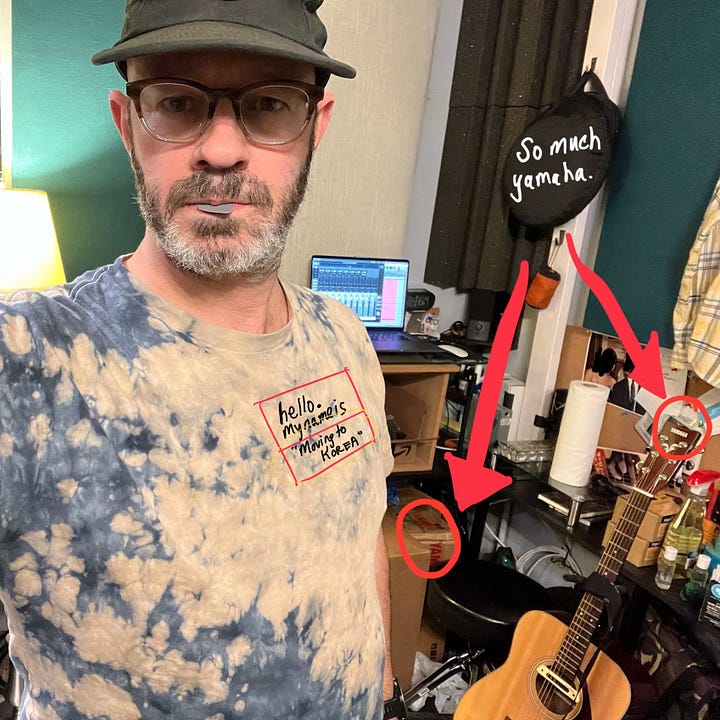
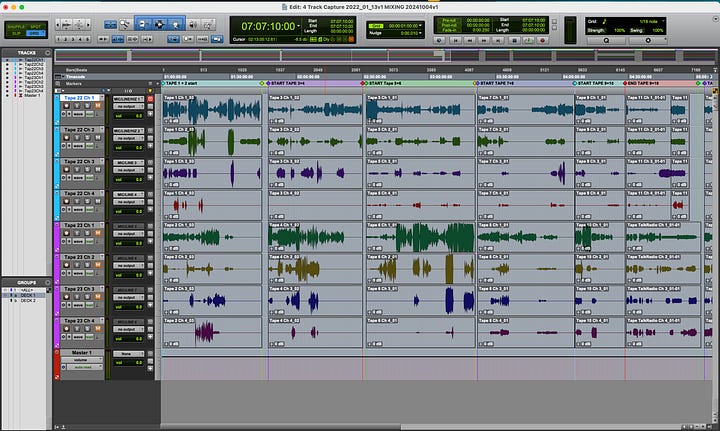

Thank you for reading.
Please visit the Index 목차 page of my publication to see all my posts, many of which are far more exiting than this.
About the author
Ryan OToole (aka, RYNO) is a skateboarder from Arizona with too many film degrees, who writes songs for Pretty City Lights—a new music project based in Seoul, South Korea. His songs have been described as, "alternative rock for people dying of middle age". Formerly associated with the band, Amateur Blonde, his songs have been featured in television and film - notably, The Walking Dead (S10 Ep21). RYNO is the author of Behind The Lights a freemium substack publication, documenting the Pretty City Lights song & album creation process with the slogan, “watch me make music”.



